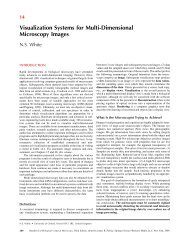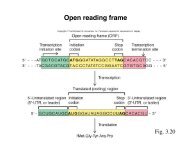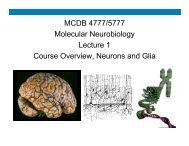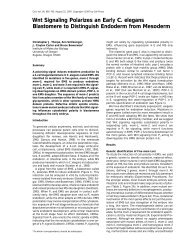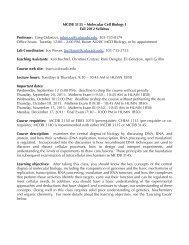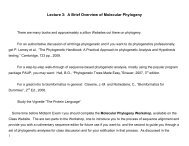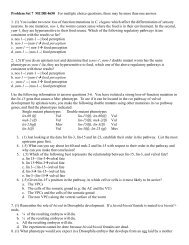2012 Program Booklet - MCD Biology - University of Colorado Boulder
2012 Program Booklet - MCD Biology - University of Colorado Boulder
2012 Program Booklet - MCD Biology - University of Colorado Boulder
You also want an ePaper? Increase the reach of your titles
YUMPU automatically turns print PDFs into web optimized ePapers that Google loves.
JoAnne Flynn, PhD<br />
Pr<strong>of</strong>essor, Department <strong>of</strong> Microbiology and<br />
Molecular Genetics<br />
<strong>University</strong> <strong>of</strong> Pittsburgh School <strong>of</strong> Medicine<br />
Title: Tuberculosis: Seeing is Believing<br />
Saturday, October 13<br />
1:15 – 2:00 pm<br />
JSCBB Butcher Auditorium<br />
Abstract:<br />
Tuberculosis is caused by Mycobacterium tuberculosis. Humans infected with this bacillus can<br />
present with active TB (symptomatic) or clinically latent (asymptomatic) infection. The factors<br />
that determine the outcome <strong>of</strong> infection are not fully understood. Active TB can present in a<br />
variety <strong>of</strong> ways, from mild to fulminant disease. Recently, we have proposed that latent<br />
infection also represents a spectrum <strong>of</strong> infections, and those that are “higher” on the<br />
spectrum <strong>of</strong> latency are more likely to develop reactivation TB. Using a non-‐human primate<br />
model <strong>of</strong> tuberculosis, we have assessed the factors and events that influence outcome <strong>of</strong><br />
infection, and have used sophisticated whole-‐body imaging to track the infection. Our findings<br />
indicate that the spectrum <strong>of</strong> M. tuberculosis infection that exists in the population can also<br />
exist in a single host. Using imaging, immunology, bacteriology and modeling, we have data to<br />
demonstrate the heterogeneity <strong>of</strong> infection within a single host at the level <strong>of</strong> the granuloma.<br />
Data on the variability in granulomas will be presented. This variability has implications for<br />
development <strong>of</strong> drugs to effectively and efficiently treat tuberculosis, as well as vaccines to<br />
prevent infection or disease.




